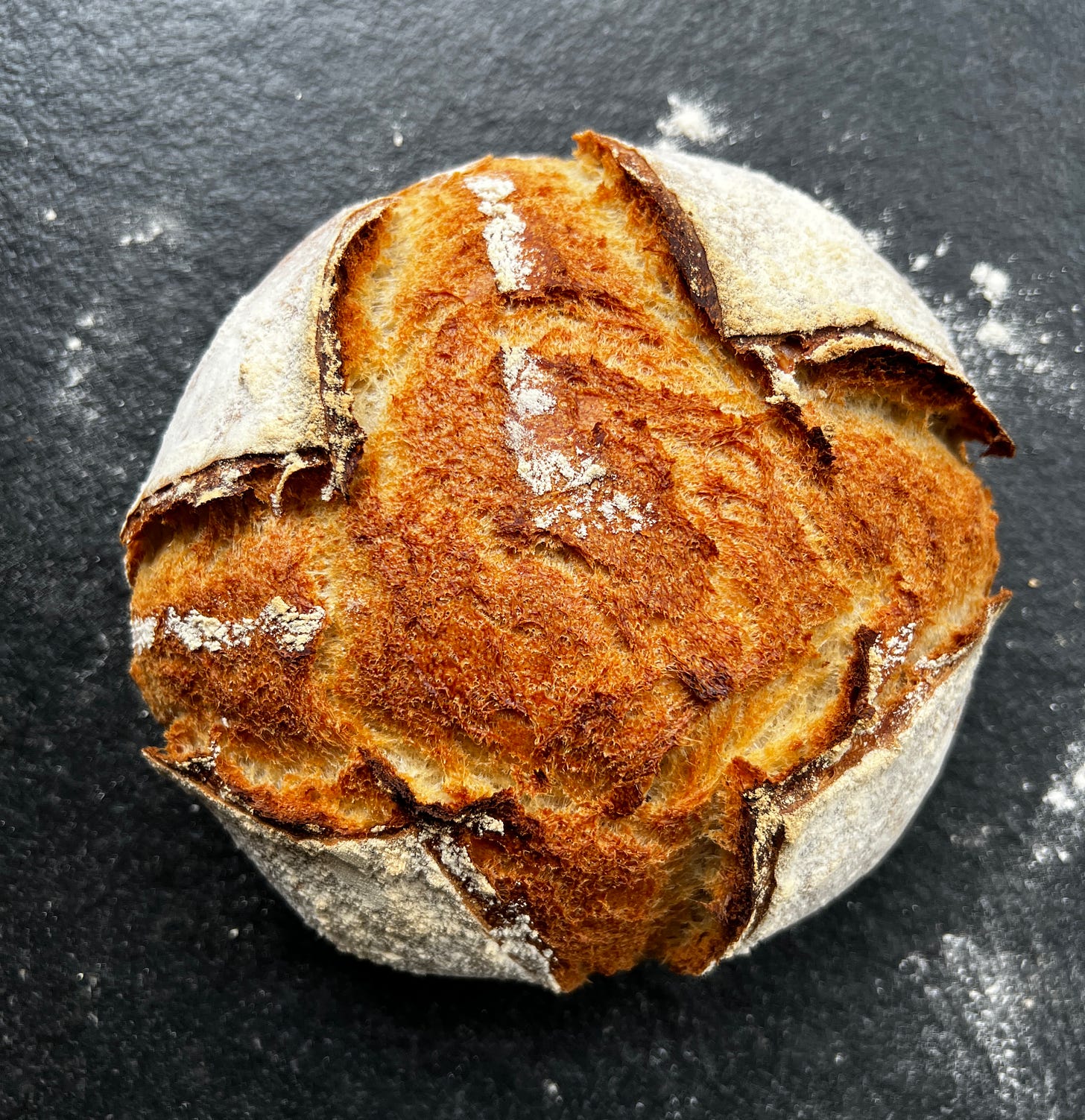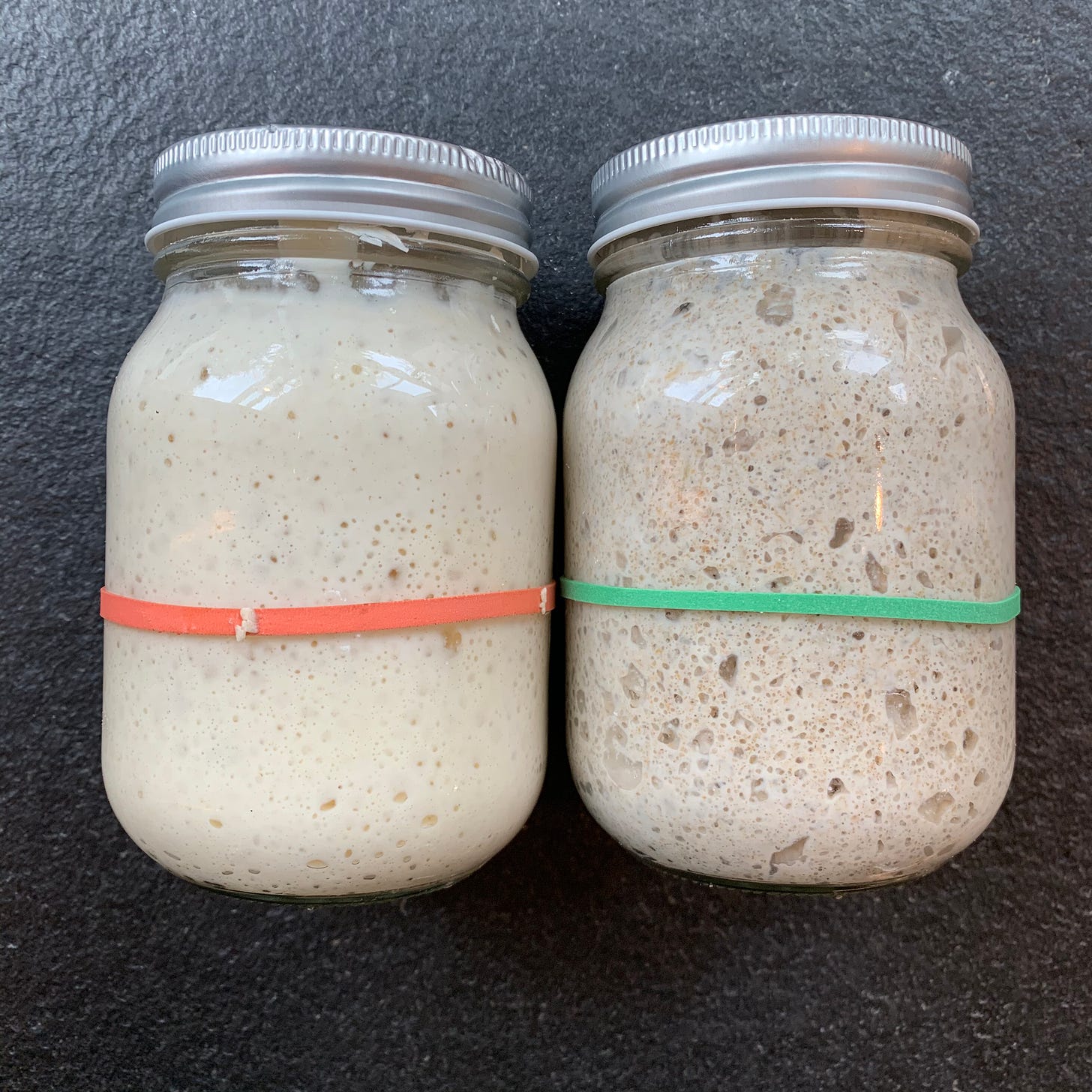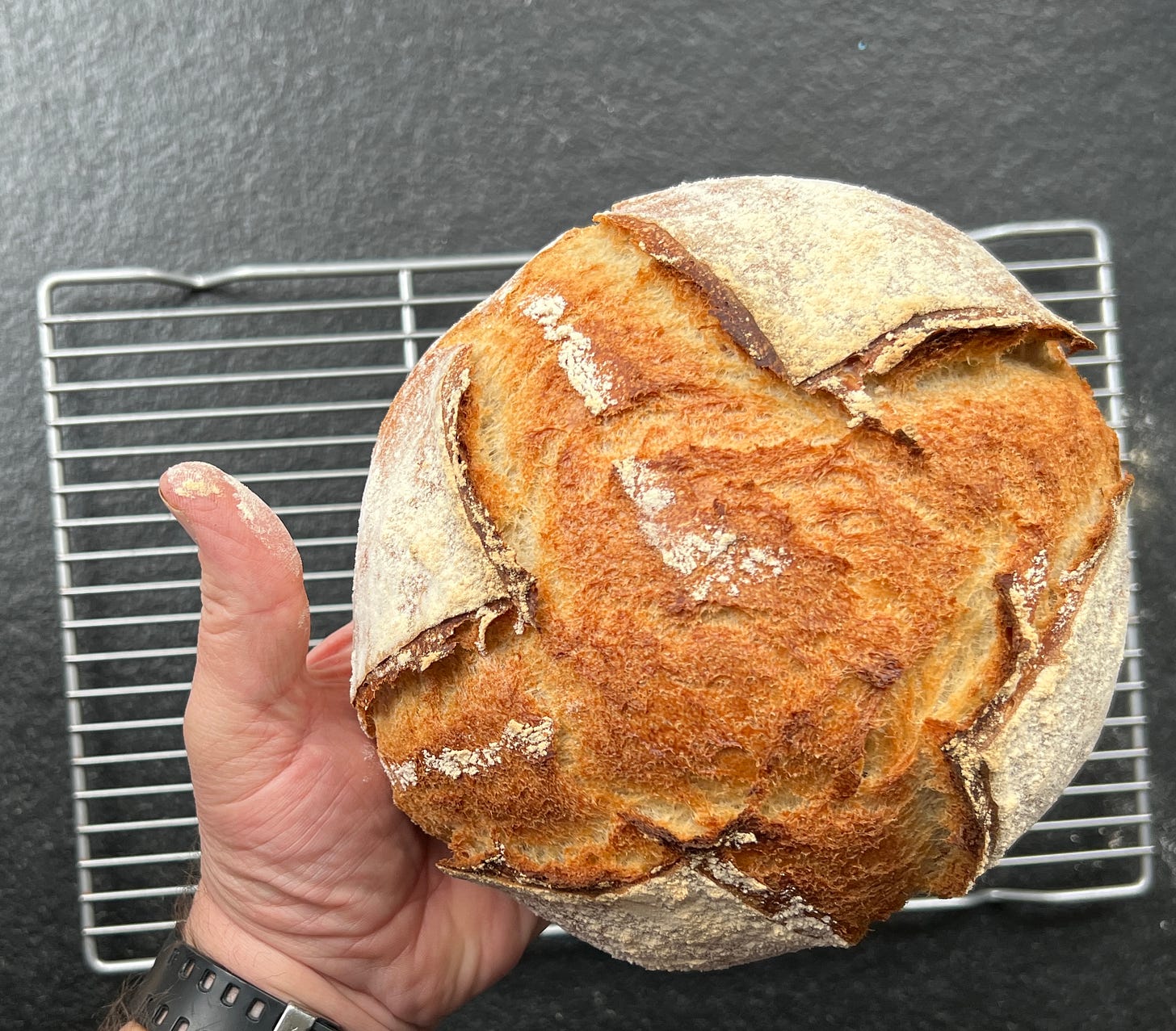Breadmaking.
Today I share a straightforward way to make a fine loaf of bread. (I was going to write about fermenting your own persimmon vinegar, but that can wait).
It doesn’t involve sourdough, but you will need to start it the day before, as it likes to sit in the fridge overnight.
Like an overworked chef having a quiet break in the walk-in chiller.
If you know you know.
Bread
A discussion in notes earlier this week about using fermented starters in breadmaking prompted me to share a recipe for a loaf that doesn’t use one.
Just yeast, flour, water and salt. And a hot, heavy pot with a lid.
It’s a huge loaf with a great thick crust that splits open as it bakes. One that crackles as it cools on the rack, pleading with you to cut into it.
And it doesn’t involve sourdough. Just good old dried yeast.
The pot that you've most likely got a pot of in the cupboard, though be minded to check the expiry date, as despite what you may think, yeast will become useless if very old, and then your bread won’t rise and will look like a slipper.
Sourdough
I might wrongly assume that most cooks have at least one jar of sourdough starter bubbling away in a cupboard. Many of you don’t. Keeping pots of what can be essentially a troublesome creature to the uninitiated or time-poor cook is a hurdle that many come up against.
Not here. This is a straightforward yeast-proved loaf of bread.
I’m not going to enter into the realm of sourdough making today as there are others more eminently qualified than me to write on the subject, I hasten to say that I have two starters, one is about five years old, the other around half that age, after an incident involving a cat left a previous incarnation a large adhesive mess of broken glass, fermented flour, sticky oats and pear trimmings stuck between the grouting of the floor tiles.
Mervin and Wilfred are their names, one is rye-based, the other a San Francisco style. I use them throughout the week for different crackers, bread sticks and the odd loaf. Pumpkin and sunflower seed brittle, sharp cheddar crackers, black olive grissini, that sort of thing. I am a sourdough aficionado, but I get that some of you aren’t. It takes dedication to keep a ferment alive, the vagaries of mixing flour and water in various amounts every few days to keep everything bubbling along slowly. There is mess, stickiness, discard and discipline to be adhered to, and I love that.
But today is not the place for such things.
Today I will share with you my recipe for a yeast proved loaf. It is a bread that needs very little skill to make, just the wherewithal to get stuck in and see how it turns out. It makes a fine round crusty loaf, that you will bake in a very hot pot with a lid. I use a Staub or a le Creuset.
It is unlike sourdough in as much as it will not keep for days, as firstly it will go stale, which is fine as I’m British and such things matter not to us as we invented toast.
Secondly, that it is such a delicious loaf of bread, you will most likely find that there will be none left to go stale. And because of that, if you do like a slice of toast then I’d say it is probably best to get in there early, for fear of missing out.
I’ll keep this short and today I’ll deviate to a standard recipe format.
A crusty loaf of bread
You will need
425 g Strong white bread flour (warm the flour slightly)
350 ml warm water
1 sachet of dry yeast
1 level tablespoon salt (no it’s not too much, bread with too little salt is criminal)
One large handful of rice flour for dusting the proving cloth or basket
Keep reading with a 7-day free trial
Subscribe to A Private Chef to keep reading this post and get 7 days of free access to the full post archives.






